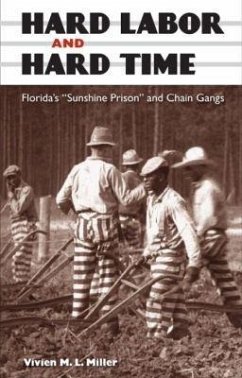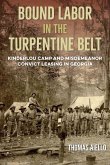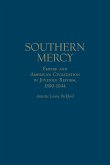"There are few, if any, state-level prison histories that are as impressively researched. This is an authoritative account that contributes a great deal to our understanding of the politics and practice of modern punishment."--Joseph F. Spillane, University of Florida "Miller's extraordinary research into the history of Florida's prisons illustrates the fundamental disjuncture between a rural southern penal system that grew from chain gangs, turpentine camps, and a Jim Crow penal farm and the carceral needs of a modernizing urban sunbelt state. Yet, as her book demonstrates, the unsavory history of punishment still hangs over the Sunshine State like a dark cloud."--Alex Lichtenstein, author of Twice the Work of Free Labor: The Political Economy of Convict Labor in the New South Hard Labor and Hard Time fills a significant gap in the literature on southern prisons and punishment by presenting a history of Florida's state prison system between the 1910s and late 1950s, specifically the state prison farm at Raiford (the third largest prison farm in the South at this time) and the chain gangs and road prisons scattered around the state.This thoroughly researched volume offers a social history of the prisoners, superintendents, guards, and other personnel. It examines the different types of agricultural, industrial, and construction work undertaken by prisoners; the impact of race, gender, age, and sectionalism on the treatment of inmates; and the methods of discipline and punishment used to maintain labor productivity and institutional control. The book also explores various strategies of accommodation and resistance utilized by inmates, including promotion to trusty, escape, labor strikes, and self-mutilation.Vivien Miller demonstrates that despite progressive changes in the treatment of inmates (such as better diet, better structuring of work and leisure activities, and better medical provision), these improvements were matched by continued brutality, neglect, and mistreatment, as well as by the perpetuation of a two-tier penal system which privileged white male prisoners and afforded nonwhite and female inmates marginal status and treatment.
Bitte wählen Sie Ihr Anliegen aus.
Rechnungen
Retourenschein anfordern
Bestellstatus
Storno








